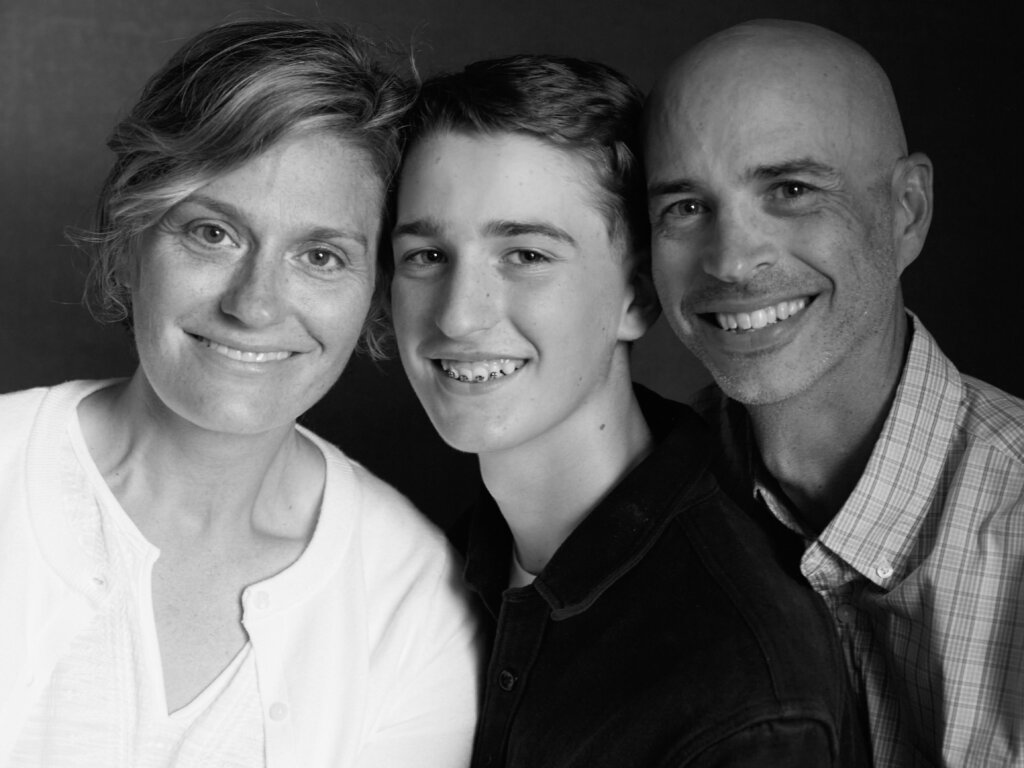School as a Journey, or Becoming Yourself
In these speeches from the Class of 2025’s graduation, BWS parents Holly Henderson-Fisher and Josh Fisher share the story of their fifteen years at Berkshire Waldorf School: how they got here, where they went (in a boat!) and what they learned along the journey from Early Childhood through Eighth Grade. Photo portrait by Alexi Lubomirski
Holly Henderson-Fisher
“It’s a tremendous honor for me and Josh to stand before you today, not just as proud parents, but as members of this cherished Waldorf community. This school is one of the core pillars of our family life. Our family’s rhythms and traditions have been painted from this school’s palette. In many ways, the DNA of this school has been forever woven into our family’s culture. And it touches every part of who our children are and who they are still becoming.
“Josh and I have been part of this school family for almost 15 years now. We joined the Berkshire Waldorf School community when our daughter, Bella, was just two years old. And Lincoln became a founding member of the “Class of 2025” as an infant, in the parent-child group. It is the only school he has ever known.
A Journey to the Brave & Beautiful
“Now, we have several parents in today’s graduating class who have a history with this school that spans MUCH further than my own. (And that is true for many classes at this school.) They were students here themselves. If you were at last year’s graduation, my dear friend, the incomparable Ariella Chezar, spoke to the graduating class. Ariella gave the most heart-warming recounting of her OWN childhood spent here at the school. She then wove her own Waldorf journey alongside that of her daughter, Celeste, who was graduating in 2024.
“Ariella’s story formed a full circle between herself and her children – with this brave, beautiful school as the constant circle holding them together. I cannot offer you a multi-generational Waldorf story today. Now, I cannot conjure images of thoughtfully lazure-painted walls and the giant hand-carved wooden boat that Ariella and a dozen of her kindergarten classmates inhabited, pressed together like siblings destined for an epic quest.
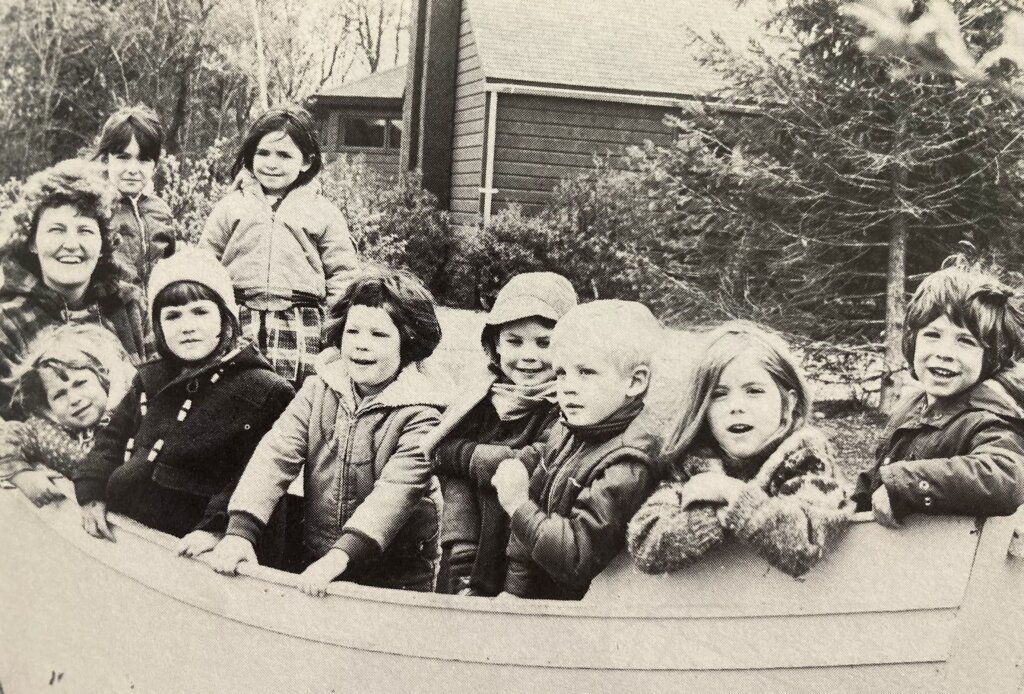
The original Little Wooden Boat from the early days of Berkshire Waldorf School.
“Truth be told, I had more of a ‘lawn furniture in the house’ kind of upbringing. MY Waldorf story, which I’ll offer you today, is a bit less idyllic….. But it is no less profound.
A Journey to Meaning
“I am a Berkshires native. I grew up just down the road, in Sheffield. Along with my brother and sister, I am the product of local public schools from Kindergarten through 12th grade. But—and it’s a big BUT—this is the school I have always WISHED I had attended. And that longing started when I was just 15 years old.
“I will ALWAYS remember sitting in freshman year English class in 1993. That is when I first encountered graduates from THIS school: ‘Steiner kids,’ as they were affectionately known then.
“I can’t remember exactly what we were studying in English, but it was the beginning of the school year and the teacher had just handed out a worksheet of some kind for us to complete. This was a true WORKSHEET. Now, any of you that were the product of a conventional, rote-learning educational system will know EXACTLY what I mean. This worksheet was definitely busy work and nothing more. We all knew it. We all hated it. We all accepted our fate and started our task.
“Except, unexpectedly, a young man seated near me raised his hand slowly. His question, I now realize in retrospect, changed the course of my life and that of my children. He raised his hand and asked ‘But WHY are we filling out this sheet?’ He was entirely polite in asking his question—but also entirely serious. The teacher seemed surprised and stumped.
“I don’t remember the answer. I am certain it was not a satisfying one. But I remember the moment itself—the QUESTION—as clear as day.
Why?
“The question lingered over the classroom like an echo. I turned in my chair. Who WAS this student, I thought . . . asking the teacher WHY we were doing whatever it was he wanted us to do. Could you do that? Was this a dialogue? An exchange of ideas? Were we allowed to ask why? And if we were, then why hadn’t I realized this sooner? My mind was blown.
“Over the course of my freshman year, I met a few more ‘Steiner kids.’ I could often tell who they were in advance; there were signs, if you knew how to spot them. They were smart—and I don’t mean just book smart. They KNEW things much more deeply than the rest of us.
“They were kind. They never, ever derived their sense of self-worth at the expense of another. They were upright, with clear eyes and full hearts. At the time, I clearly remember thinking that these kids were somehow their own people—like, people with opinions… already! And they were just 15.
“That simple Why? spoken over 30 years ago hung over me for the rest of my high school education. It followed me to college in New York City and graduate school at Oxford. It followed me to law school. And honestly, it never left.
A Journey to Beauty & Truth
“Flash forward 15 years to 2010: Josh and I were choosing what kind of education we wanted for our own children. We wanted them to be able to stand in their own truth and ask WHY. We wanted them to be known and to know themselves. We wanted them to recognize their own humanity, and the humanity and inherent worth of every single person around them. And that is the task of Waldorf Education, in a nutshell.
It turns out that Waldorf Education is actually not that hard to explain. It is about raising healthy, centered and actually connected human beings. This education speaks to every part of the human experience—our search for knowledge, for beauty, for meaning and for goodness.
– Holly Henderson-Fisher
“When I was 15, I knew there was something to this Waldorf thing. But in 2010, I was sure. Josh and I visited Mr. Eurich’s Middle School classroom on a tour of the Great Barrington Rudolf Steiner School (as our school was known then). Bella was not yet two. But we stood at the back of his classroom as Mr. Eurich taught and I heard the sweet call of that familiar word—WHY?
“Mr. Eurich and his students were going over the homework from the night before. Students were raising their hands as they moved through the assignment, offering answers to Mr. Eurich. They were moving at a fast clip. It was a real group experience; everyone was chiming in.
“An answer was offered to one problem and Mr. Eurich said ‘Yes, that’s right.’ But as he began to move on, one student said…
But why?
“It was as though lightning struck me. I still get chills just thinking of it now. An exchange ensued between the student and Mr. Eurich. Then other students offered solutions and explanations. The back-and-forth continued. It was, in fact, a dialogue!!!
“School, it turns out, was not a dictatorship. Now, maybe it wasn’t quite a democracy . . . but it was a relationship. Of respect. Of inquiry. Of a fully seen, and heard, and known class family and a fully engaged class teacher.
“In 2010, we chose Waldorf Education for our children. And we have never looked back. BWS Class of 2025, at some point in each of your journeys, your parents did the same. They chose this school and this education for you. As we stand before you today, I am absolutely certain that my children’s education at Berkshire Waldorf School is the greatest gift we have ever given them.
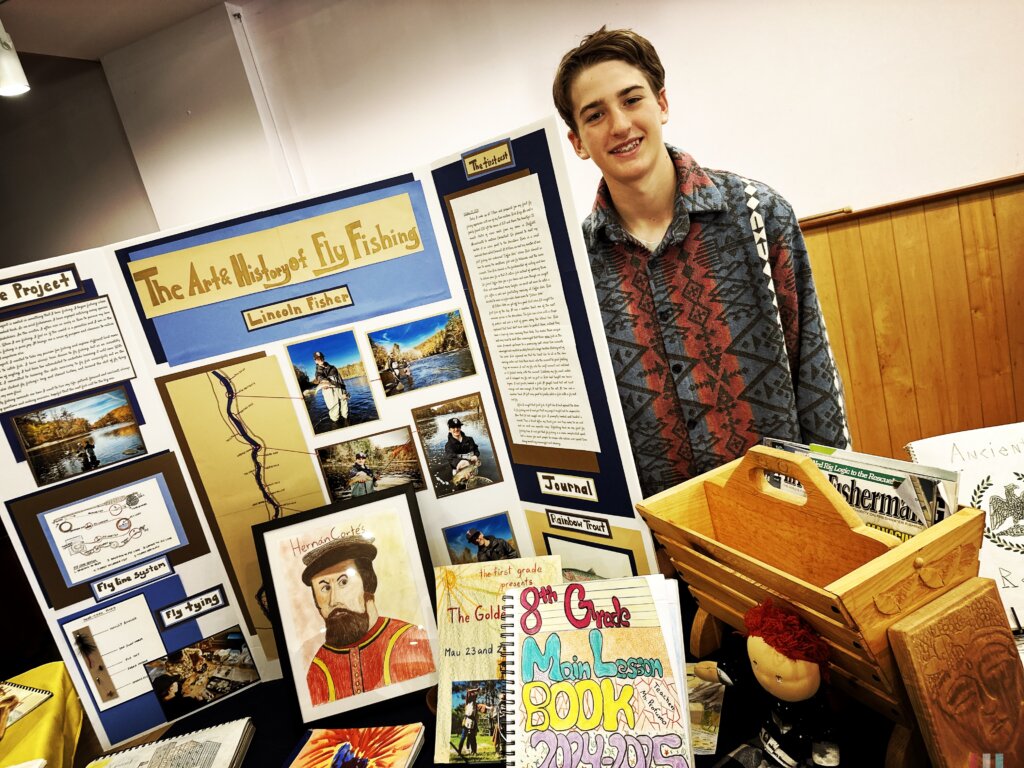
“When a child is educated in freedom, in rhythm, in respect for their inner world—they don’t just fit into society. They help change it. They see possibilities. They know how to ask questions, how to create, how to care.”
– Holly Henderson-Fisher
A Journey to Courage & Creativity
“To the Class of 2025: an education of the head, hands and heart is more than a motto—it is a lived experience. And it is a gift. You are each stepping into the world with a sense of wholeness, with the courage to be creative, and with the empathy to meet others as fellow human beings. Carry with you the rhythms and stories that have shaped your time here.
“Trust your inner compass, even when the path ahead is uncertain. Stay curious. Stay kind. Speak the truth. Always. Even when other voices around you fall silent. And know that what you’ve experienced here—this deep, soulful education—is a part of you now. It is in your hands. In your words. In your way of being.
A Journey to Transformation
“As I reflect on the journey that brought the Class of 2025 to this moment, I am filled with deep gratitude. Gratitude for each of the Early Childhood teachers, many of whom are here today, who held our children in rhythm, beauty and wonder. Gratitude for Mrs. Fernbacher and Ms. Profumo, and all the teachers who have guided them with patience, reverence, and wisdom.
“Gratitude for the rhythms and rituals that have shaped their days and years. For festivals, handwork, art, movement, nature, the morning verse. And gratitude for the deep-rooted values of this education: that learning is not just about information, but about transformation.
“To the teachers: thank you for seeing the true essence of each of our children. Thank you for holding space for their unfolding. For teaching not just with your minds, but with your hearts.
“And to my fellow parents: we have shared something special. This community has been a village in the truest sense. These children, the Class of 2025, are a family. They deeply know and love one another—they respect one another. And I know we will carry that connection forward.
“So here’s to this beautiful, resilient, imaginative, and brave class of 8th graders. May you continue to meet the world with wonder. The world needs exactly who you are becoming.
Congratulations, Class of 2025.
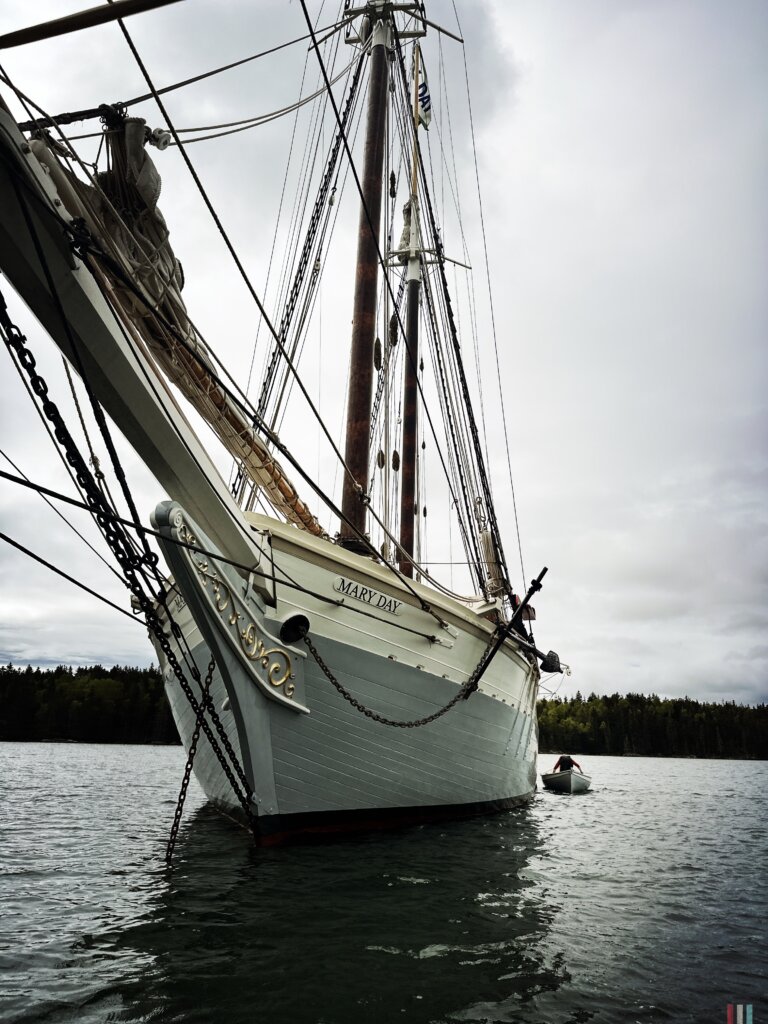
The Class of 2025 set sail on the Mary Day schooner for their last trip together.
Joshua Fisher
“As many of you know, I recently had the pleasure of chaperoning the Eighth Grade class trip to Maine and New York City. It really was a pleasure, and if you ever have the opportunity to spend five days and nights packed onto a 90-foot schooner, cheek by jowl with twenty-three 14 year-olds, I do highly recommend it—as long as you’re sailing with these guys.
“Now, I have known many of these young people for a long, long time. Since the Rainbow Room. The Rose Room, even… if you want to go way back. And even the more recent arrivals I’ve gotten to know quite well through my various roles here at our school… Pizza Friday crew chief. Theatrical lighting director. Gardening class assistant. And most recently, late-night bedtime enforcer.
“Despite some evening shenanigans, we had a great time together on the boat. Hoisting sails. Jumping into the cold, cold ocean. Fighting over that last meatball at the dinner table. I got to see them all in a new way, and I got to know them all a little better, a little deeper. And I am so grateful for this.
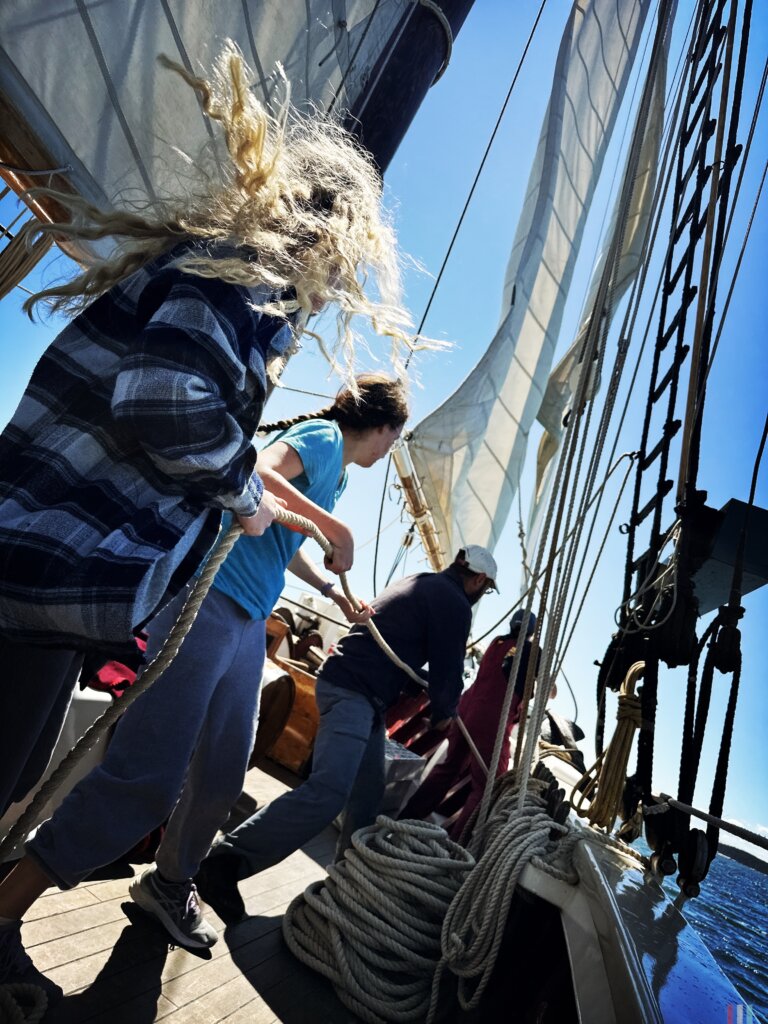
Raising the sails on the Mary Day required the teamwork of the whole class.
“But there’s also that old saying that familiarity breeds contempt. In this case, it was definitely not contempt that I was feeling. No, it was far, far from contempt. But perhaps, at times, familiarity did breed in me a certain predisposition toward annoyance. Especially after the 10pm lights-out call.
A Journey to Becoming Themselves
“So I was actually a little bit surprised when, on the last day of our journey, several of the crew and the instructors on the ship came to us chaperones and told us how our Eighth Graders stood out from all the other student groups they had encountered before—even other Waldorf classes.
“They were impressed by how close our students were, how kind they were, how well they treated each other, and also how they treated the crew. They were respectful, inquisitive, eager to learn, and eager to help. Not afraid to work, to polish brass on deck or scrub dishes in the galley.
“And I think the crew was especially impressed by the students singing in the main cabin house before bed, led by Mr. Ree and Ms. Patel. For it is rather unusual, in this day and age, for a group of teenagers to so fully, and so beautifully, take up the ancient art of the sea chanty.
“These kids, the Mary Day crew told us, were different. They were exceptional.
“And as they praised these students, the scales of familiarity fell from my eyes and I saw these young people in a fresh light. Not as a chaperone tasked with bedtime enforcement, but as these other adults saw them. Very similar to the way Holly saw that ‘Steiner kid’ in her public high school classroom years ago. Similar to the way she and I saw Mr. Eurich’s Eighth Graders in the classroom, when we first visited as young parents.
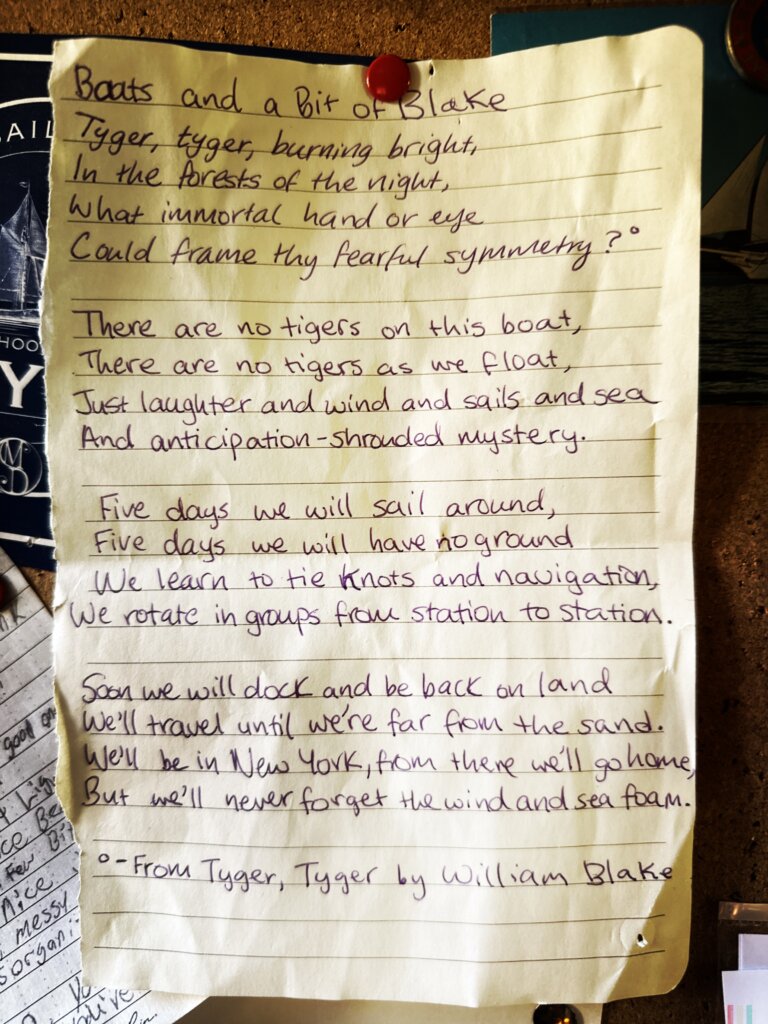
“And even though I already knew them and loved them—even past bedtime—I was newly impressed by them, and I realized… Aha! That’s right! THIS is why we are all here, at THIS school: for the formation of exceptional—exceptionally whole—young people, with sharp minds, strong characters, and willing spirits.”
– Josh Fisher
“So good work, parents, on raising such exceptional children. And thank you so much to Mrs. Fernbacher, Ms. Profumo and all the teachers at BWS for all you have given to these young people. Your hard work and dedication pays off each time they step out into the world and strive to make it better.
“Congratulations, graduates. You made it. This is your day. Enjoy it. For in the immortal words of that famed troubadour and poet, Captain Barry…
It is a lovely day in the great state of – Not Maine, but Massachusetts. Sunny skies. 70 degrees. Palm trees and white sand beaches. Tall glasses of lemonade with tiny pink umbrellas. And today, well-lived, makes yesterday a dream of happiness and every tomorrow a vision of hope.
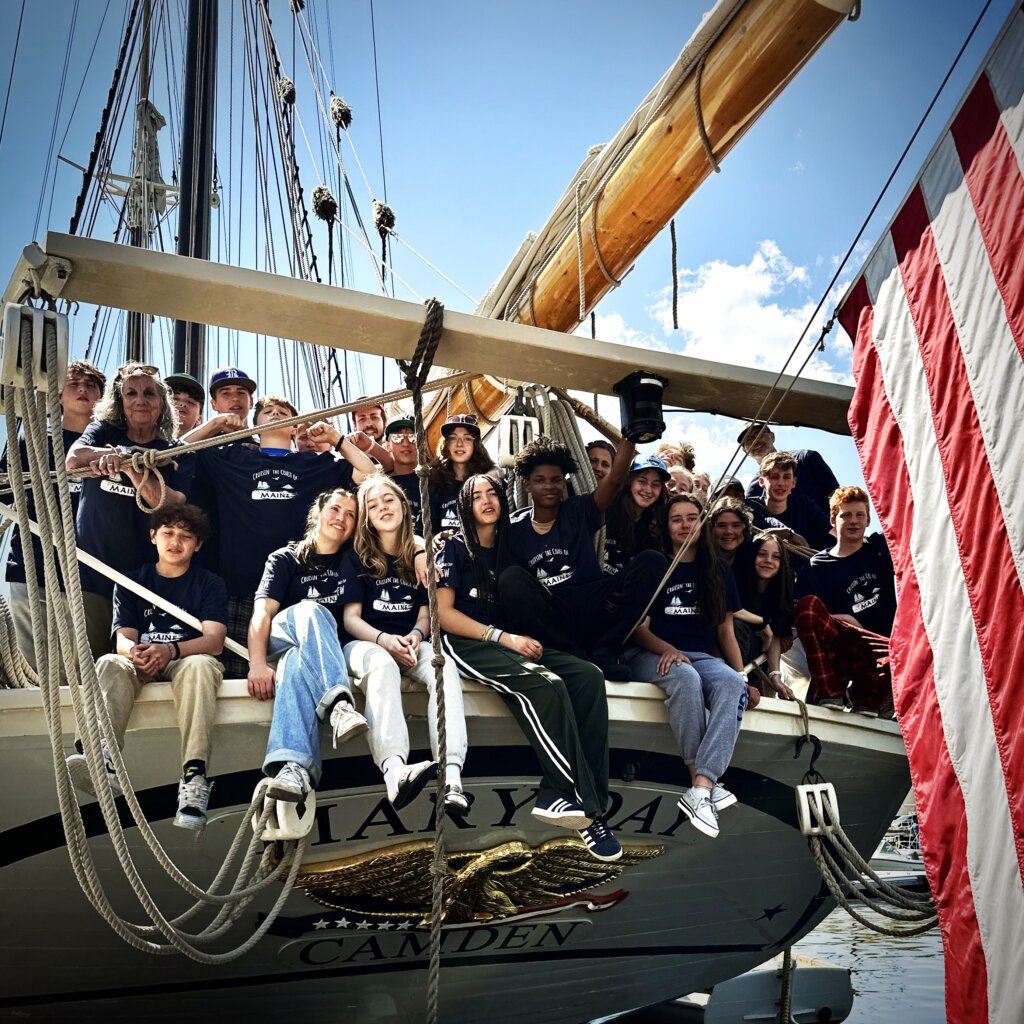
Sail on, Berkshire Waldorf Class of 2025!
PS. For more insights about the adventure of learning from First through Eighth Grades at Berkshire Waldorf School, former Class Teacher Dr. Torin M. Finser’s book School as a Journey:The Eight-Year Odyssey of a Waldorf Teacher and His Class follows his BWS class through all eight years of Grades and Middle School. Dr. Finser―who is now Director of Waldorf Teacher Training at Antioch New England Graduate School―wrote this book especially for parents, prospective parents, and educators who are new to Waldorf education.
Header Banner content below
Happy Summer! To arrange your personal tour for Grades school or Early Childhood, contact admissions@berkshirewaldorfschool.org.
The Season of Light
As we approach the Winter Solstice on December 21, Berkshire Waldorf School, with Waldorf schools all over the world, enters the Season of Light.
During this time of the longest night and shortest day of the year, we celebrate the spirit of peace and joyful anticipation by bringing light and warmth into the darkness with candles, holiday lights and observance of the moon and stars. For inner warmth and light, we take comfort in family, friends, food and traditions of giving.
Berkshire Waldorf School celebrates these qualities through a number of rich, reverent celebrations and festivals.
The Spiral of Light
Lighting the Darkness
BWS Kindergartners participate in the Spiral of Light, which brings a mood of quiet reverence to the season. Each child walks a spiral path made of evergreen boughs strewn with minerals and crystals. As they reach the center, children light their “apple candle” at the central candle, and place it along the path home, to light the way for friends.
Elementary and Middle School students mark the Season of Light with age-appropriate festivals and rituals that come out of the learning content from each grade. These speak to children with soul-satisfying comfort and peace. Practicing warmth and joy at a dark time centers us all in strength and hope.
Advent in Four Weeks
In Waldorf schools, students from all backgrounds participate in the month-long observance of “Waldorf Advent,” anticipating the rebirth of the light.
Grades and Middle School students gather on Monday mornings in December for special songs, stories and verses. Each Week, students light one more candle in the Advent wreath, to balance the increasing darkness outside. The menorah stands next to the wreath, and students light it, along with the wreath candles, during Hanukkah.
The weeks of “Waldorf Advent” honor the kingdoms of nature—minerals, plants, animals and human beings—and this theme is brought into classroom activities and decorations as well.
As the weeks progress, the Waldorf Advent wreath is decorated with crystals and shells, flowers, small animals and people (some hand sculpted by students out of beeswax). Early childhood students celebrate these festivals in their classrooms.
Waldorf Verse for Advent
The first light of Advent is the light of stones.
The light that shines in crystals, seashells and bones.
The second light of Advent is the light of plants.
Plants that reach up to the sun, and in the breezes dance.
The third light of Advent is the light of beasts.
It shines in the greatest, it shines in the least.
The fourth light of Advent is the light of humankind.
The light of love, the light of thought, to give and understand.
Celebrating Together
BWS families are invited to gather in the auditorium on Friday, December 20 at 11:00 am, where our month of festivities culminates in a holiday assembly to celebrate the Season of Light as a community.
On Thursday, December 19 at 3:00 & 7:00 pm, the faculty & staff invite the community to their performance of The Shepherd’s Play. This is one of a trilogy of Medieval plays which Waldorf Education founder Rudolf Steiner recommended to Waldorf schools. This annual gift from the faculty to the community is a joyful retelling of the Christmas story through the experience of the shepherds. Join us in the Auditorium (Grades School Building) right after school or in the evening.
All are warmly welcome to these FREE performances!
Berkshire Waldorf School faculty and staff wish your family a beautiful holiday season, and memories that bring renewed warmth and light throughout the years.
Happy Holidays!
Ceremony focuses attention so that attention becomes intention….Ceremonies transcend the boundaries of the individual and resonate beyond the human realm. These acts of reverence are powerfully pragmatic. These are ceremonies that magnify life.
Robin Wall Kimmerer, from Braiding Sweetgrass
Snow and stars from Ms. Alessandra’s First Grade chalkboard.
In-School Festivities for the Season of Light
December 6, Saint Nicholas Day The story of a wise and generous person, Nicholas captivates the imagination of our youngest students, and brings the warmth of caring and giving to this season of celebration.
Early Childhood classes receive the surprise of a basket of treats that Nicholas brings (golden walnuts and clementines are favorites). They sometimes catch a glimpse of him passing across the landscape on his journey of good will.
Nicholas visits children in the Grade School. Many of the children have heard the story of this wise person, also know as St. Nicholas, in their classrooms, but his visit is a special surprise for them. Nicholas represents one’s “higher self” to the children, embodying goodness, understanding and wisdom. Nicholas carries a golden book, and he reads a personal message to each Grade School student. Early Childhood children may also catch a glimpse of St. Nicholas through their classroom windows as he passes through their play yards.
December 13, Santa Lucia Day In our school, Santa Lucia Day and the visit from Nicholas come out of the Second Grade curriculum of “Golden Hearts,” people who devote their lives to their values. We follow in the tradition of a day widely celebrated in Sweden on the feast day of the “Queen of Light,” an historical figure who brought food to the hungry during a time of famine. Second Graders perform this seasonal role, dressing in white with candlelight “crowns,” and visiting throughout school, including Early Childhood, to bring each class freshly baked saffron buns and a song to light the darkness.
Shepherd’s Play The Christmas image is one of a humble birth surrounded by love. In the Christian tradition, Christ’s birth is celebrated just after Winter Solstice, as the light of earth is returning. This humorous and joyful “Oberufer” Christmas story has been played for decades at Waldorf schools throughout the world, based on indications by Waldorf Education founder Rudolf Steiner, and is performed at BWS by faculty as a gift to students, families and the community.
The Joy of Giving
In the Berkshires, when the earth falls quiet under winter snows, we look inward to reflect on the passing year, and look forward to the sun’s return and lengthening days.
As a community, we take comfort in the light of family, food and traditions of giving. We hope this helps you understand all we do to celebrate the Season of Light at Berkshire Waldorf School. What a joy to celebrate together!
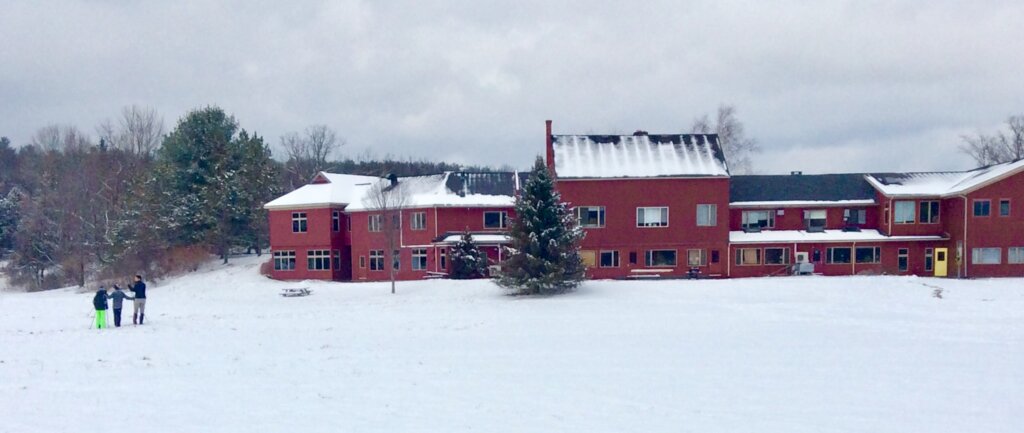
Looking Forward to the Grades
Welcome to our first program introduction event (P.I.E.!) of the season, Looking Forward to the Grades, Tuesday, November 26, from 10:00-11:00a.

- During this conversation in the Berkshire Waldorf School Library, you’ll meet Elementary and Middle School teachers, administrators and current Grades families.
- Learn more about BWS Grades School curricula, programs and how Waldorf Education evolves to meet the your child’s developmental needs as they grow.
- Kindergarten and Pre-K parents and caregivers are invited to join this conversation, even if the transition is a few years down the road for your child/ren. Feel free to bring interested friends or family.
- Applications for Fall 2025 are open now! For more information and to get started, visit our Admissions page.
Looking Forward to the Grades is a brief introduction for families with young children and those considering joining our Waldorf school from other educational backgrounds. To compliment this conversation, plan to join us for Coffee, Tea & Tour and upcoming Program Introduction Events. For more information, registration and directions, create an account in our family portal, Ravenna. We look forward to seeing you there!
Any questions? Please be in touch via email at admissions@berkshirewaldorfschool.org or call (413) 528-4015 x. 106.
BWS Holiday Handcraft Fair is Coming Nov 16!
Fair News Flash: The Auction is OPEN! Bring your gift list and bid on your favorite Berkshire fun and treats through November 17.
Sharing the Delights of a Creative Family Holiday
Our 52nd annual gift to the community, Berkshire Waldorf School families, teachers and students come together to create a festive Holiday atmosphere, making tiny gifts for the Little Peoples’ Shop and the Pocket Fairy, transforming each class in the Grades School building into a magical realm to explore. Meanwhile, many elves are busily knitting squares to form this year’s unique Community Afghan.

For more information, contact 413-528-4015 or fair@berkshirewaldorfschool.org

For the Child in Us All
Early Childhood teachers perform a puppet story, featuring their own handcrafted puppets, with two performances during the day.
Other Fair highlights include the Children’s Craft Room where youngsters can make their own presents, “Sweet Spot,” an interactive game with live musicians (and desserts for prizes!) and the Pocket Fairy, whose many pockets are filled with small surprises.

Treats for All Ages
The Berkshire Country Store stocks artisanal and gourmet treats, and our lunchroom, Rudy’s Diner, serves lunch, warm drinks and homemade desserts.

Shop for one-of-a-kind handmade items in the Handcraft Room, and bid for gifts and prizes in the Raffle Room.
Holiday Handcraft Fair magic continues in our online auction of gifts, experiences, memberships and services. Click the button below to view and bid, and have fun planning your next adventures! Handcraft Fair Auction proceeds benefit Berkshire Waldorf School Tuition Assistance programs.
Online auction bidding opens the week before Fair day, November 10 at 10:00 am, and closes Sunday, November 17 at 9:00 pm, so don’t wait to bid on your treasures.

Thanks for bringing your whole family over to play at the BWS Holiday Handcraft Fair! Free entry and parking; rain or shine.
Happy Holidays!
Berkshire Waldorf School’s curriculum of academic excellence–activated with movement, music, outdoor learning and the arts–has been preparing students to achieve their full potential for 53 years. The school welcomes Fall 2025 applications for students 18 months through Eighth Grade starting November 1, and offers generous tuition support for qualified families.
Sharing the Solar Eclipse with Young Children
Sharing the solar eclipse with young children offers a rare opportunity to help your child learn that they can stay safe and grounded, even when something extraordinary happens.
Learning Through the Senses
For the young child, every day is a celebration.
Young children experience the world through their senses. They feel the light and warmth of the sun through their bodies. They marvel at the sun’s power to wake up plants and birds, chase the clouds away and peel off our winter coats.
Celebrate the Good
In Early Childhood classes at Berkshire Waldorf School, we celebrate all that’s good in the world: the beautiful light of the sunrise, food prepared with so much care, the children’s community of loving family, the safe embrace of Mother Nature, and so much more.

Instead of Explaining…
In our modern world, we focus on the scientific, material aspect of things. We tend to understand phenomena like a solar eclipse through intellectualized explanations. However, giving children rational explanations prematurely can contribute to confusion, anxiety and hypervigilance. It pulls little ones out of the developmental space where the world makes sense to them because they can experience it with their senses. The sages of old knew to meet events like this with the same wonder and reverence as other cosmic events.
Waldorf Education founder Rudolf Steiner writes about how children’s feelings during such moments are the same as what we could call “religious feelings” in an adult.
Focus on Experience
So instead of looking up during the time of the eclipse, how about we look down?
I invite you to tap into your inner quiet during the time of the eclipse, and observe your children and nature. How does the light and the mood change? Look for shadows and light. How are your pets behaving? And what about the other animals that might live in your backyard? The crows, the geese? Are the birds singing? Are the bees buzzing? How do the flowers and trees change? Is your child getting a bit clingy, or are they oblivious to what is happening in nature? Let the experience resonate without a verbal explanation.
Highlight with Gratitude
We can take this opportunity to give gratitude to the Sun and the Moon for sharing their light with us. How about planting some flowers for the bees, who are sometimes called “light workers”? Sunshine soup for dinner? Moon cakes (aka pizza or tortillas)? How about a candle for the moon and a candle for the sun, to give thanks for their life-giving light? These are just a few thoughts to fuel your imagination.
A solar eclipse is so much more than one celestial body passing in front of the other and blocking the light, it’s an opportunity to share the wonder of the world with our children.

Great Barrington Proclaims Hilda Banks Shapiro Community Day
The legendary Hilda Banks Shapiro, Berkshire treasure and one of Berkshire Waldorf School’s founding parents, has been honored posthumously with her own Community Day.
Read in the Berkshire Eagle.

Celebrating First Nations Day
As you walk onto the Berkshire Waldorf School campus this week, you’ll see turkey feather flags that students of all ages have hung on branches for First Nations Day, to remember the connection between the people, the land and a spirit of gratitude.
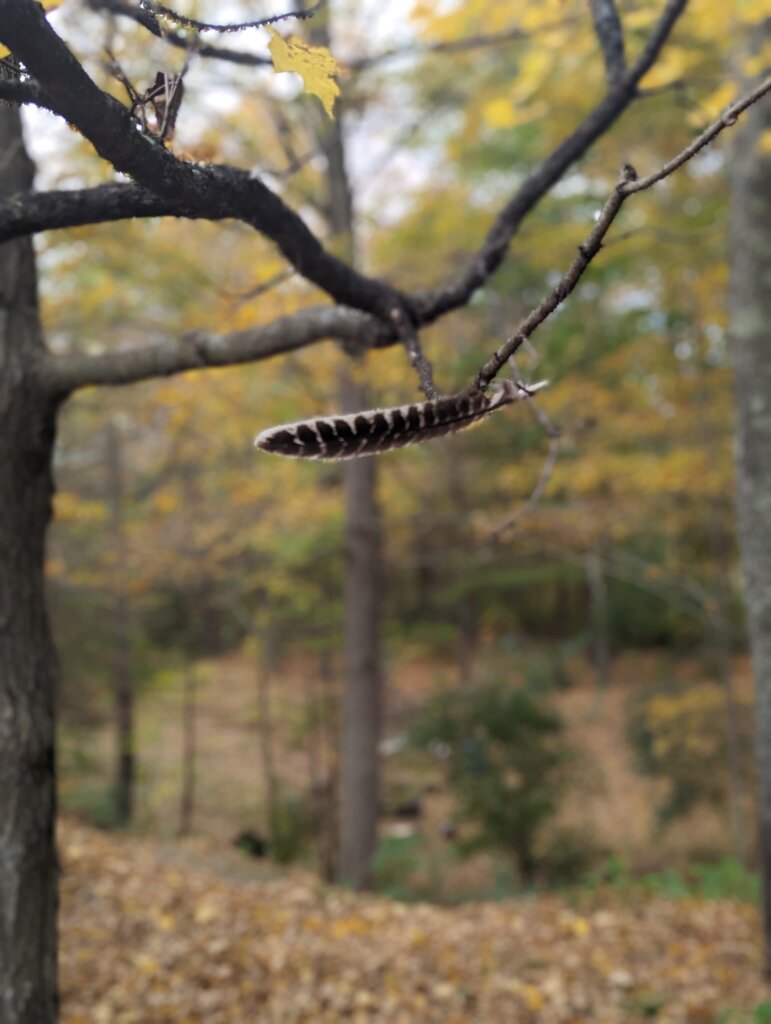
We were honored to welcome members of the Stockbridge-Munsee Band of the Muh-he-con-ne-ok (Mohican Nation) Shawn Stevens and Shannon Chada back to their Homelands from their current-day reservation in Wisconsin, for our school celebration on Tuesday.
Mr. Stevens, also known as Standing Eagle, visited the school for the first time last year. He and Ms. Chada were visibly touched by the turkey feathers—hung knee-high by our youngest students—welcoming them along the path beside the native “sumac forest,” near the Nursery play yard. (Sumac is a treasured Mohican medicine plant.)
Fire Circles – The Original Classroom
This year, Mr. Stevens brought traditional flute and drum songs to Early Childhood students, plus a humorous story. (Kindergartners can tell you the story of “How the Bear Lost Its Tail”—that tricky fox!)
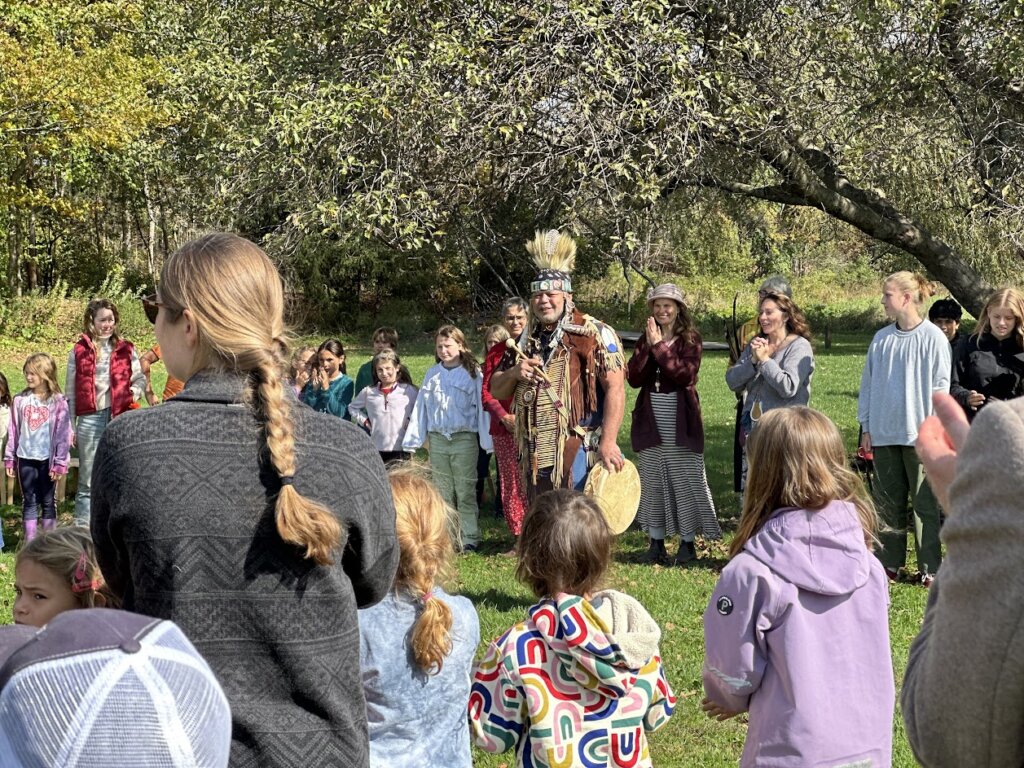
Around the fire with First through Eighth Graders, Mr. Stevens spoke about many aspects of Mohican culture that resonated with topics our students are already learning about, such as how Mohican family groups lived in longhouses, all along the Mahicannituck (Hudson River), and east to the Housatonic. Mr. Stevens described how warriors (“those with big hearts”) went out in their canoes to meet Henry Hudson when he came up the river; at that time, the Muh-he-con-ne-ok had already lived along its banks for thousands of years.
Mr. Stevens discussed how many Nations in our Eastern Woodlands region are relatives, springing from the original Algonquian language group, and had disbursed as far as the Great Lakes and the Carolinas, in order to share available resources. For this reason, he noted, the name Muh-he-con-ne-ok designates “where we’re from” more than “who we are.” It translates approximately to “People of the Great Tidal River.”
What We Learned
Eighth Graders reflected on the ways of thinking that Mr. Stevens discussed in the circle. Here are a few of their takeaways:
“We are all family. We are all the same species, and all come from the same place (Earth). If we could really realize this, we could end war forever.”
“My shirt is made of thread, woven into cloth to keep warm, but it doesn’t mean anything; it’s a thing. Mr. Shawn was saying every thread and bead and stitch of his sash was woven with good intentions and prayers. Imagine how that feels.”
“The tribes of North America, just like the tribes of Africa, aren’t generic, but distinct Nations, with their own languages and cultures and ways of life.”
Onewe! Thank you for teaching us!
Click the button below to see more pictures of the Great Barrington town ceremony and walk on Monday. We are so grateful to see our students carrying the banner for Indigenous Peoples’ Day.
We remember that we are gathering and learning on the sacred, unceded Homeland of the Muh-he-con-ne-ok, the People of the Waters That are Never Still, who are now living and thriving in Wisconsin and the Berkshires.
First Days of School
Beginning our 52nd school year with the traditional Rose Ceremony marks the first key transition our First Graders make, as Eighth and Twelfth Graders welcome them into the Grade School.
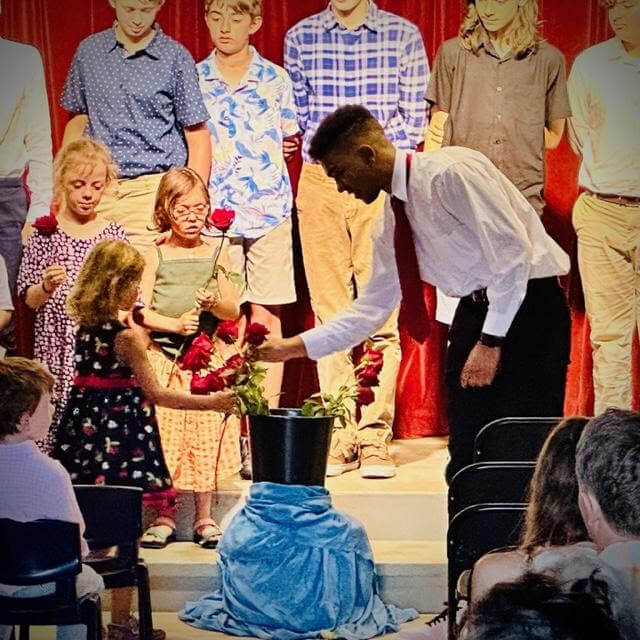
First Days of First Grade
First Graders begin the school year with a Main Lesson block in Form Drawing. This three-week block introduces straight and curved lines, which are the basis for all the letters and numbers students will learn over the course of the year. It’s how drawing organically becomes writing and all four mathematical operations. BWS and BWHS students build on this strong foundation over their twelve years of Elementary and High School starting right here, in the first week of Grades School!
The Class Teacher presents fairy tales and stories from all over the world, teaching in a form that children already know, love and understand, through stories. She creates living pictures using both movement and imagination, without notes or screens. The children listen transfixed, then each child carefully draws a form from the story into their very own main lesson book.
First Graders practice making straight and then curved lines. Next, they incorporate the straight and curved lines together, creating a new form. At last, the focus turns to learning to draw a spiral, as the children first practice walking a spiral, forming it on the ground with rope, as well as drawing on each other’s backs!
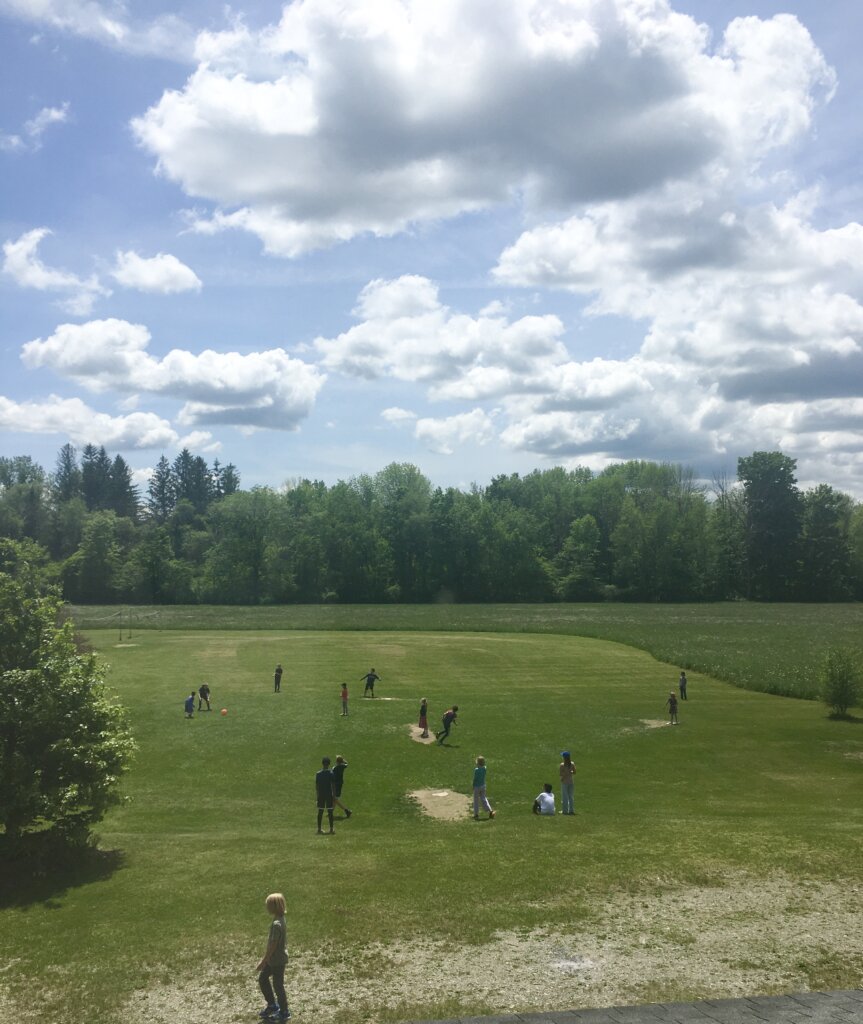
Becoming a Class
So much of First Grade is about learning to become a community. At Berkshire Waldorf School, the class will move together through the Grades, and frequently on through High School, so relationships, belonging and etiquette are an important part of education. Notably, in Waldorf Education, this social learning is part of the curriculum in both academic and subject classes.
As an example of social learning in First Grade, Class Teacher Victoria Cartier discussed the importance of building up the basics (already well-established in BWS Early Childhood classes). This is what Waldorf teachers call “form”: learning to walk in a line, work together in a circle, attend to the teacher–all the ways their experiences teach the children how to work and play together, help one another and take care of the space they share.
Ms. Cartier spoke about the development of the children from Kindergarten to First Grade.
The transition from Kindergarten to First Grade is crossing a bridge, a critical passage as students’ energy slows down and they are able to learn internally, become aware of their feelings and access a deeper ability to produce, express and generate their internal thoughts and memories, without relying on sensory reminders.
-First Grade Teacher Victoria Cartier
Ms. Cartier also emphasized not taking for granted just how new everything is for students brand new to the Grades School, and how much growth and change is occurring within them. In First Grade, Games period and recesses are organized by Ms. Cartier, while the afternoons are reserved for free play. During free play, the teacher has time to observe social dynamics, and discover students’ different affinities, strengths and joys, when they are free to explore, climb and play whatever calls to them. The strength of the class as a whole shines through during this time.
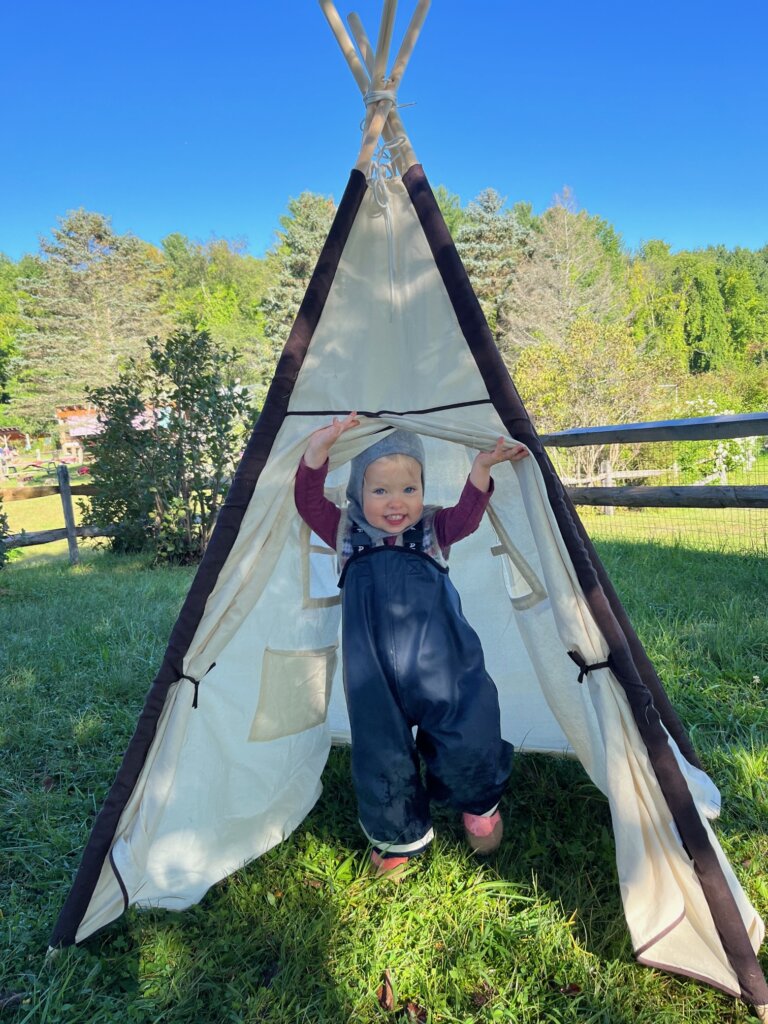
The Very First Days of School
Our youngest Early Childhood students in the Star Room (Toddler), Rose Room and Robin’s Nest (2-4 years), and Sun Room, Rainbow Room and Pumpkin Patch Kindergartens (5-6 years) started school with surprisingly few tears. Some children had their very first experience of being away from parents and regular caregivers. We were delighted to see and hear them playing, running, visiting the sheep, climbing trees, singing and laughing. It’s wonderful to have our youngest students back on campus!
Welcome dear families, to this learning and growing community.
Join us! May Day @ BWS
Berkshire Waldorf School May Day Celebration MONDAY May 1, at 11:00 a.m.
Wear your May crown! Berkshire Waldorf School invites our community to enjoy this joyous Waldorf Spring festival, celebrated every May 1 on the school Green. Free; rain or shine.
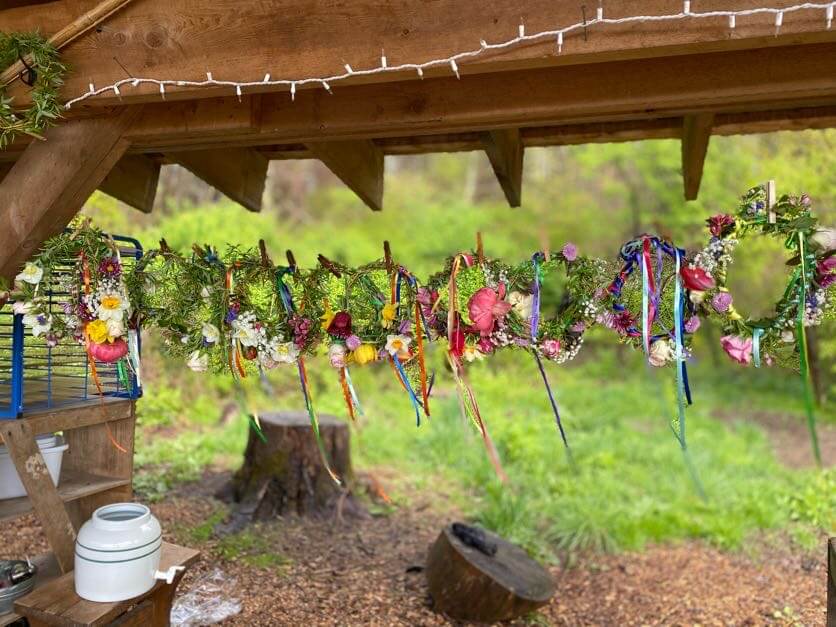
To welcome in the summer
Wear your May crown! Festivities begin at 11:00 a.m., featuring our May Pole and all the trimmings — live music, local Morris dancing teams and country dancing by Grades School students. Bring your family and friends, blankets, weather appropriate hats and a picnic, and help us welcome in summer in the Berkshires! Rain or shine.
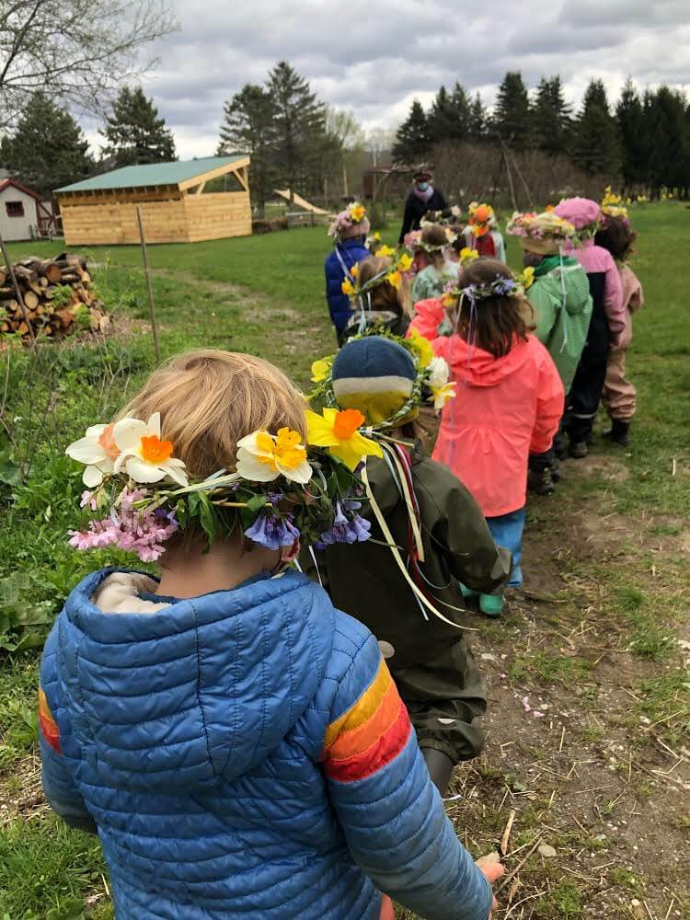
Come early to see the school in action
The school will host an informal open house and tour at 9:00 a.m. the same morning, prior to the celebration. To register, please contact Admissions Director Robyn Coe at 413-528-4015 x. 106 or admissions@berkshirewaldorfschool.org
Happy Spring!

